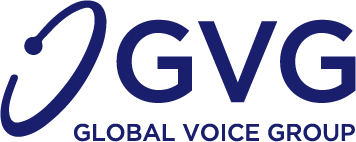
Interoperability solutions for improved financial inclusion
Can interoperability solutions help further promote financial inclusion in Africa? Over the past decade, sub-Saharan Africa has witnessed significant progress in terms of financial inclusion. According to the CGAP, financial account ownership and usage have indeed increased during this period, likely as a result of the expansion of Mobile Money services. However, there is scope for improvement, especially when it comes to increasing the value of financial services and removing barriers like the identity gap. Interoperability is a concept that is currently trending in many key economic sectors. Interoperability solutions for improved financial inclusion feature on many governments’ and service providers’ to-do lists. This blog post looks into the impact of interoperability on two confirmed drivers of financial inclusion: digital financial services and digital identity.
Promoting financial inclusion through regulation-backed interoperability
Digital payment services like Mobile Money (MM) promote financial inclusion by giving unbanked individuals access to financial services they would otherwise be deprived of. Interoperability solutions can enhance the positive impact of these services on financial inclusion, as they allow the different platforms to interact with each other. As a result, the customers of different FSPs can make payments to other users even though they may not have the same provider. This, according to the CGAP, makes it easier and more convenient for individuals to make payments and encourages them to carry out more transactions.
Increased interoperability may therefore lead to improved financial inclusion. However, to get there, it requires appropriate regulation. Indeed, regulation supports durable relationships among digital payment service providers, as well as between these providers and other financial institutions. This promotes unhindered financial flow from one stakeholder to the other. By providing the right regulatory framework, regulators have a crucial part to play in enabling effective interoperability within the digital payment ecosystem, and thus in promoting financial inclusion in their respective countries, and ultimately on the continent as a whole.
Improving financial inclusion through interoperability solutions: Increased value of digital financial services
The potential of interoperability solutions for improved financial inclusion is fully realized in the digital financial services sector.
While cash is still the preferred method of payment on the continent overall, digital payment services are becoming increasingly popular is some countries, like Kenya. These services, like MM, are widely considered as a driving factor in the promotion of financial inclusion. However, the financial flexibility they offer has limits. Indeed, many MM subscribers, for instance, can only make payments within their provider’s network.
Interoperability is the answer to the need for more flexibility and options when it comes to digital payments. Interoperability-enabling platforms make it easier for unbanked individuals to use financial services like MM. They allow users to pay others even though they may not be customers of the same provider. Furthermore, they allow traders to receive digital payments from anyone, almost anywhere. According to a 2021 report by the CGAP, interoperability improves the value proposition of digital payment services. It thus promotes their adoption by low-income customers, which fosters financial inclusion.
Ghana, for example, launched MM interoperability (MMI) in May 2018, to create beneficial network effects for the users and to reduce transaction costs. Since then, MMI has led to a considerable increase in the volume of MM transactions in the country. In 2020, MM transactions increased by about 444% compared to the previous year, reports an article published on the Africa Digital Financial Inclusion Facility.
As mentioned previously, achieving interoperability within digital financial services requires the implementation of fair and appropriate regulation. Indeed, regulation ensures the smooth and stable functioning of interoperability, by promoting compliance within the digital payment ecosystem and protecting all involved parties. Another key requirement is the right technological tools and infrastructure. GVG meets this requirement through its TransFin solution, an Interoperability and National Payment Gateway platform aimed at governments and central banks. The purpose of TransFin is to ensure interoperability between MM services and other platforms.
Improving financial inclusion through interoperability solutions: Development of the multi-purpose digital identity
According to the International Institute for Sustainable Development, a “multi-purpose digital identity” is key to supporting social and financial inclusion in developing countries. However, 56% of people in the sub-Saharan region do not have an ID. How, then, do we achieve this “multi-purpose digital identity” on the continent? Part of the answer lies in interoperability. Interoperability will allow digital ID systems to seamlessly exchange data with other systems, devices, or applications. An African citizen’s digital ID will therefore allow them to easily access a broad variety of services.
According to the World Bank, interoperability brings numerous benefits to the implementation of the digital ID. It promotes technology and vendor neutrality, protects identity-related data, creates administrative efficiencies, reduces fraud, improves the experience of the end users, and supports innovation. However, the systematic exchange of data between ID systems may create data security concerns. Here again, a strong regulatory framework must be created and implemented to ensure the protection of this sensitive data.
The awareness that the development of secure digital identity ecosystems is necessary to support financial inclusion has led to the launch of various initiatives. For example, some African countries have signed the Smart Africa Trust Alliance declaration on data and digital identity interoperability. Furthermore, the West African Monetary Institute (WAMI) has been working to create an interoperable unique digital ID for banking and a harmonized customer verification network in The Gambia, Guinea, Liberia, and Sierra Leone.
In light of the above, it becomes apparent that interoperability solutions have a positive impact on financial inclusion, even if only indirectly. They support digital ID and bring added value to digital financial services, these having already made a significant contribution to making formal financial services available to the unbanked. It is, however, important to note that their success is dependent on “a host of favourable socioeconomic and regulatory factors”, as indicated in a 2020 report by the GSMA. The need for regulation appears to be a common denominator in the optimization of interoperability for financial inclusion and should therefore constitute a key consideration for governments.
Want to read about GVG’s Interoperability and National Payment Gateway platform? Click here.
